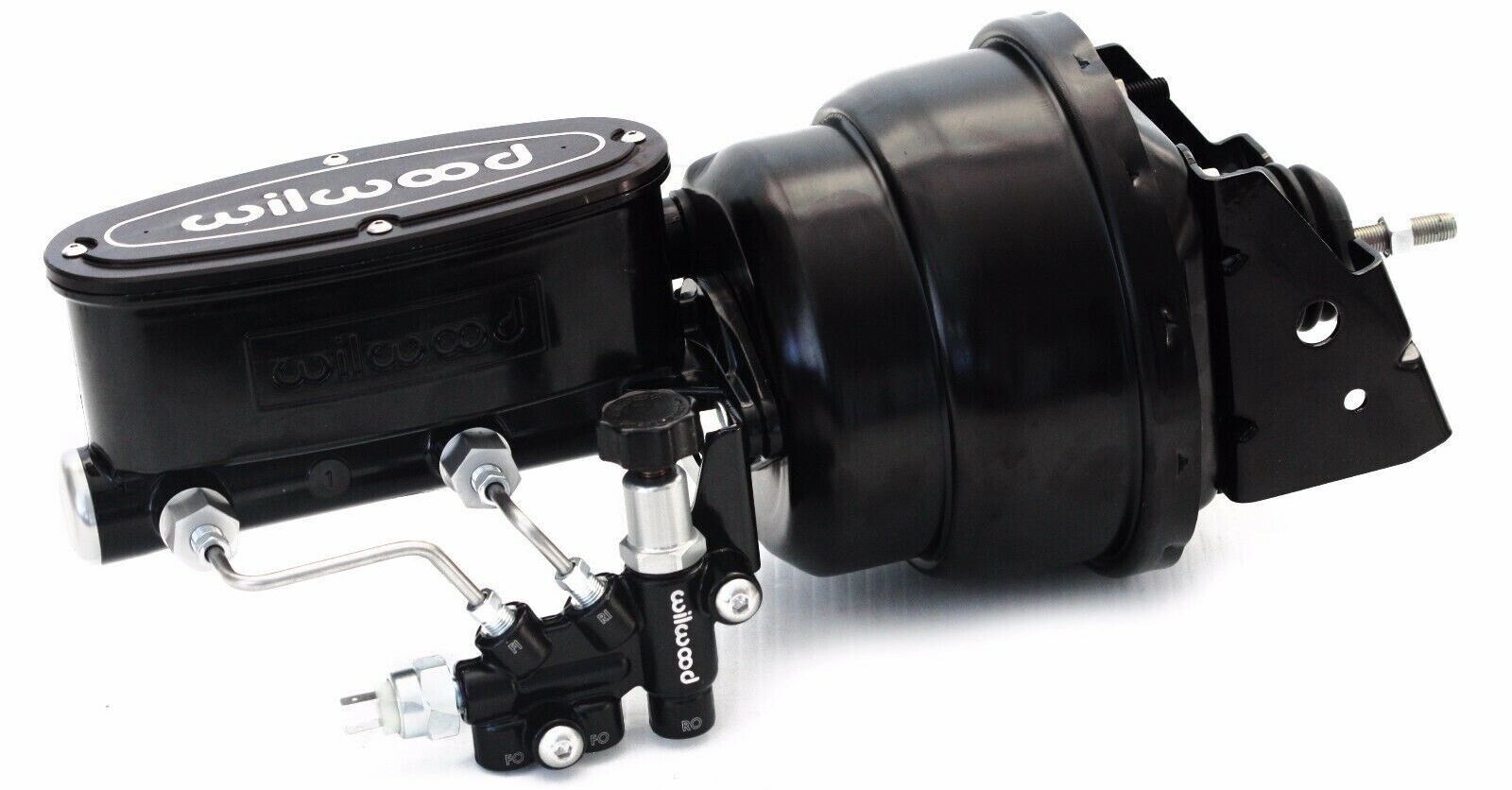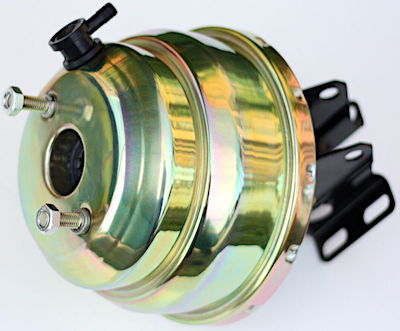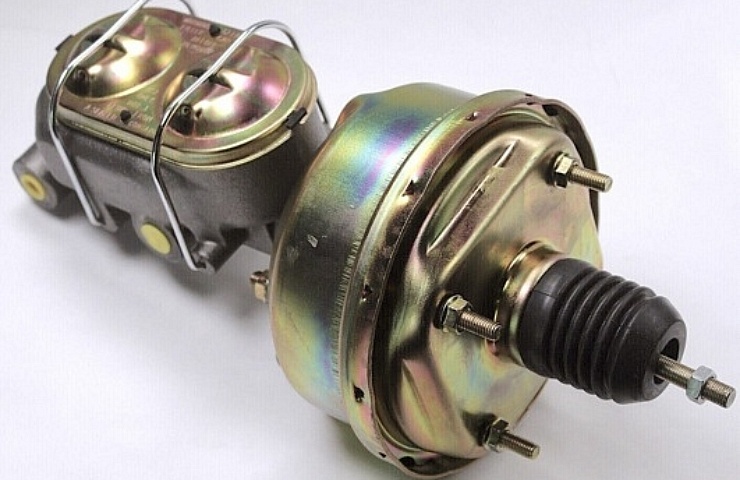Any motor vehicle is a miracle of engineering. Imagine telling your ancestors from 200 years ago that you can move freely around the country in a wagon made from metal and powered by dead dinosaurs.
One of the unusual things on a car is the braking system, where any person who can move their leg a couple of inches can stop a two-ton machine moving a mile a minute. That marvelous feat is assisted in most cars by the brake booster. Let’s take a look at how they work.
What Is a Brake Booster?
Quite simply, a brake booster is any device that multiplies the force from the brake pedal to assist in slowing a vehicle. Most vehicles use a vacuum booster, using vacuum pressure to amplify the foot pedal force pushing fluid through the lines via the master cylinder. On gasoline-powered cars, the vacuum pressure is generated by the car’s engine, whereas on diesel-powered cars a separate vacuum pump generates the vacuum pressure.

Wilwood master cylinder / brake booster assembly for the Chevrolet Camaro (67-81) and Nova (68-74)
The master cylinder is mounted to the brake booster. The pushrod that is connected to the brake pedal pushes through the brake booster via a diaphragm to the master cylinder, and the vacuum pressure increases the pressure on one side of that pushrod giving additional stopping power. Assuming the vacuum system is properly sealed, there is usually enough vacuum to briefly add stopping power even if the engine shuts off.
Why Do I Need a Brake Booster?

LEED Brakes 57-72 full-size Ford eight-inch dual power brake booster
Nearly every car on the road today is equipped with a brake booster. Some cars from the 1960s and older may not have been equipped with the technology, or the feature may have been optional. Many cars with four-wheel drums didn’t need a brake booster, as the centrifugal force created by the drums added its own sort of power. Disc brakes are more effective, but do take a bit more force to properly actuate. The brake booster is an important part of the entire system.
How Do I Replace A Brake Booster?
Replacement is a straightforward task, but it takes a bit of mechanical know-how. If you are not comfortable working on your braking system, take your car to a qualified mechanic. The entire system needs to be assessed to ensure that when you replace a brake booster you are fixing the entire problem. A leak in the hydraulic system or badly worn pads could also lead to poor braking performance. There could also be a vacuum leak that prevents the booster from performing to spec.
Check the Docs
Always refer to the shop manual if it’s time for a new unit. In general, replacing the booster requires removing it and the master cylinder from the firewall of your vehicle. Then remove the master cylinder from the brake booster and bolt the new part to the master cylinder. Ensure all vacuum lines have been reconnected and are in good condition. If you’ve opened the brake fluid reservoir or any of the lines leading to the master cylinder, you must properly bleed the brakes as well.
Shop now for brake boosters




